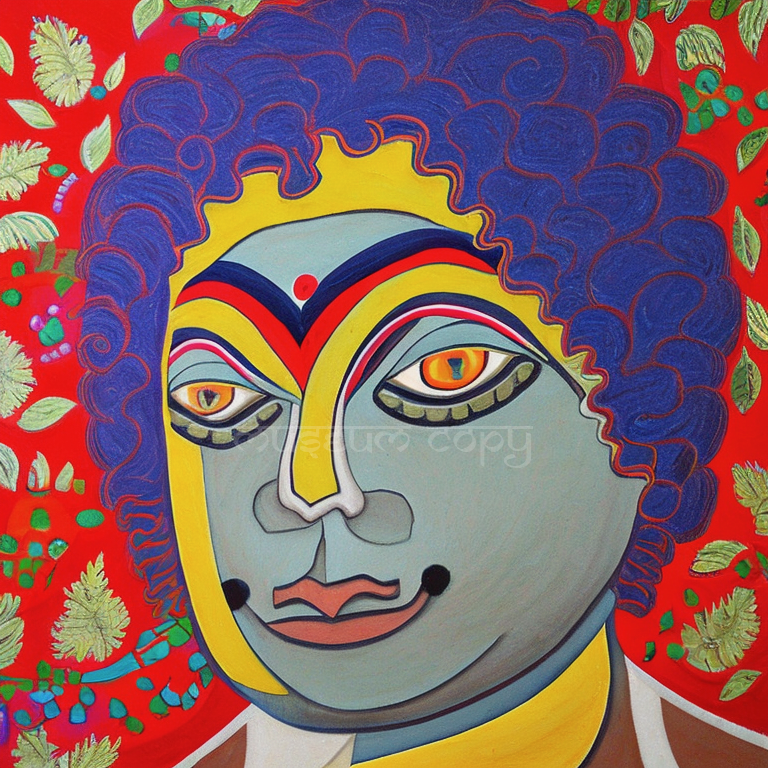British Impact on Indian Art During Colonial Rule
•

During the British colonial rule in India, there was a significant shift in the patronage and appreciation of art. The British administration and the ruling elite, driven by their own cultural biases, favored Western art and aesthetics over traditional Indian art forms. This shift had a detrimental effect on the artistic independence and development of Indian artists, leading to the neglect and decline of many traditional art forms.
One of the key factors contributing to the loss of artistic independence was the change in the patronage system. The British colonial administration and the British elite became the primary patrons of art, and their preferences heavily influenced the direction of artistic production. They tended to favor European art styles and aesthetics, which marginalized indigenous Indian art forms. Traditional art forms that did not align with Western tastes were often devalued and overlooked, leading to a decline in their practice and recognition.
Additionally, the British colonial authorities established institutions and art schools that promoted Western academic methods and European art techniques. These institutions became the primary centers of art education, shaping the training and artistic practices of Indian artists. Traditional art forms, which relied on oral traditions and apprenticeship systems, were often disregarded or deemed inferior by the colonial administration.
The focus on Western art and aesthetics also affected the market for Indian art. As the British elite became the primary collectors and buyers of art, the demand for traditional Indian art forms diminished. This resulted in economic challenges for artists practicing traditional art, pushing them to adapt or abandon their traditional practices to cater to the tastes of the colonial patrons.
Furthermore, the British colonial authorities, through their Orientalist perspective, often portrayed Indian art as exotic curiosities rather than as expressions of a vibrant cultural heritage. This reductionist view led to the commodification of Indian art, where it was often marketed and sold as souvenirs or decorative objects for the British market. This commercialization further diminished the cultural and artistic significance of traditional Indian art forms.
Despite these challenges, it is important to acknowledge that not all Indian artists succumbed to the pressures of colonial influence. Some artists actively resisted and challenged the dominance of Western aesthetics, while others sought to synthesize traditional and Western artistic approaches. The efforts of these artists, such as those associated with the Bengal School of Art and later the Progressive Artists' Group, played a crucial role in revitalizing Indian art and asserting its cultural and artistic independence.
Overall, the loss of artistic independence during the British colonial rule in India was a result of shifting patronage, the prioritization of Western aesthetics, and the commercialization of Indian art. The marginalization and neglect of traditional art forms had a lasting impact on the artistic landscape of India, but the resilience and creativity of Indian artists have continued to shape and redefine Indian art in the post-colonial era.
One of the key factors contributing to the loss of artistic independence was the change in the patronage system. The British colonial administration and the British elite became the primary patrons of art, and their preferences heavily influenced the direction of artistic production. They tended to favor European art styles and aesthetics, which marginalized indigenous Indian art forms. Traditional art forms that did not align with Western tastes were often devalued and overlooked, leading to a decline in their practice and recognition.
Additionally, the British colonial authorities established institutions and art schools that promoted Western academic methods and European art techniques. These institutions became the primary centers of art education, shaping the training and artistic practices of Indian artists. Traditional art forms, which relied on oral traditions and apprenticeship systems, were often disregarded or deemed inferior by the colonial administration.
The focus on Western art and aesthetics also affected the market for Indian art. As the British elite became the primary collectors and buyers of art, the demand for traditional Indian art forms diminished. This resulted in economic challenges for artists practicing traditional art, pushing them to adapt or abandon their traditional practices to cater to the tastes of the colonial patrons.
Furthermore, the British colonial authorities, through their Orientalist perspective, often portrayed Indian art as exotic curiosities rather than as expressions of a vibrant cultural heritage. This reductionist view led to the commodification of Indian art, where it was often marketed and sold as souvenirs or decorative objects for the British market. This commercialization further diminished the cultural and artistic significance of traditional Indian art forms.
Despite these challenges, it is important to acknowledge that not all Indian artists succumbed to the pressures of colonial influence. Some artists actively resisted and challenged the dominance of Western aesthetics, while others sought to synthesize traditional and Western artistic approaches. The efforts of these artists, such as those associated with the Bengal School of Art and later the Progressive Artists' Group, played a crucial role in revitalizing Indian art and asserting its cultural and artistic independence.
Overall, the loss of artistic independence during the British colonial rule in India was a result of shifting patronage, the prioritization of Western aesthetics, and the commercialization of Indian art. The marginalization and neglect of traditional art forms had a lasting impact on the artistic landscape of India, but the resilience and creativity of Indian artists have continued to shape and redefine Indian art in the post-colonial era.